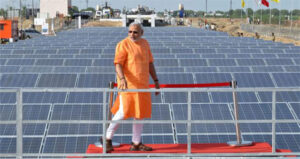India has an ambitious target of reaching 100GW of solar generation capacity by 2022 but it currently has only 16 GW of annual solar module manufacturing capacity. Out of this only 9-10 GW capacity is operational. India has a huge demand for solar. The country imported $2.16 billion worth of solar photovoltaic (PV) cells, panels, and modules in 2018-19 and $69 million in Q2. India’s solar imports declined by 83% in Q2 2020. Further, imports declined by 77% YoY, in Q3 to just ~$17 million.
The slowdown in the imports was mainly due to the lockdown as a result of the COVID-19 pandemic from stalled project development activity due to labor and material shortages. China still accounts for the largest share of solar imports to India. To discourage solar imports from neighboring countries especially China, the country will impose customs duties on solar panels to the tune of 40% and 25% on solar cells, as part of the Atmanirbhar Bharat.
Need For PLI in India
India has a huge demand for power. Given the rising level of air pollution and in order to reduce its carbon footprint, the country is aggressively looking towards clean energy sources like solar and wind energy. Due to its green credentials and falling costs, solar technology gained traction in the country. However, India still lacks sufficient manufacturing capacity to cater to this rising demand. The annual solar cell manufacturing capacity is just around 2.5 GW. In order to reduce this gap, the government has come up with a PLI scheme to grant incentives to solar manufacturing companies.
The incentive will be available to Indian as well as foreign companies manufacturing in India. The government plans to offer Rs 4,500 crore for solar modules and Rs 18,100 crore for batteries. The PLI scheme will support and should boost domestic manufacturing, especially for battery and solar cells in India. The government will be working to triple the manufacturing capacity setting up 4000 MW of solar cell manufacturing capacity in India. The Centre has also decided to provide additional incentives to manufacturers using advanced technology like high-efficiency solar modules. The PLI scheme will also create more employment opportunities and reduce the burden on foreign exchequer.
Conclusion
India is 64 GW away from its target 100 GW solar generation capacity by 2022. Hence, there is a huge demand for polysilicon, wafers, cells, and modules in the country. Actual consumption will almost touch 20-30GW per year. Though India has set up a massive target of installing 100 GW of solar power by 2022, the country still lacks a decent polysilicon manufacturing unit which is the basic raw material for a solar cell. If the Production-Linked Incentive (PLI) Scheme for high efficiency solar PV modules becomes a success, it will enhance India’s manufacturing capabilities and exports, making the country self-reliant.
Google+


